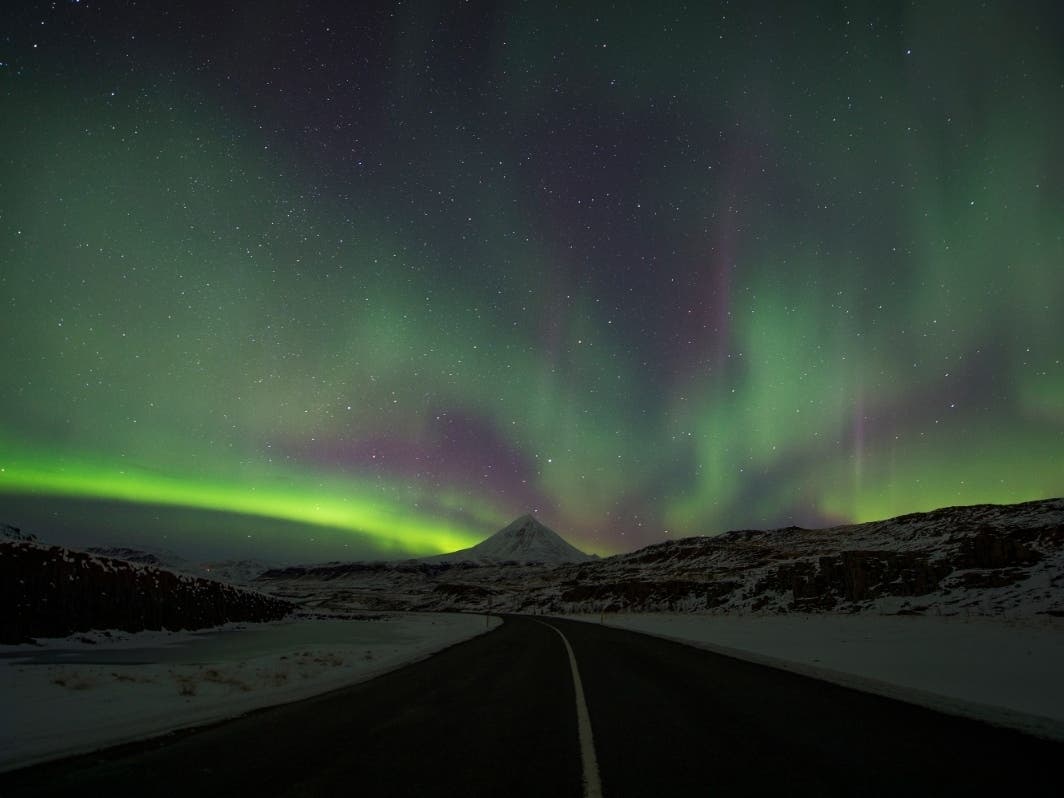Community Corner
Here's Why We May See More Stunning Northern Lights Displays In The Next Decade
As the sun approaches "solar maximum" in its 11-year cycle and the number of sunspots ramps up, we may see the northern lights more often.

ACROSS AMERICA — Here’s a storm season Americans living in the northern U.S. can sit back and anticipate: Solar storms 93 million miles from Earth occur with more frequency midway through an 11-year cycle in which the sun’s magnetic fields flip polarity — and that means the northern lights could dance more often in the next decade or so.
Northern lights displays are never guaranteed, of course, and they’re a treat people south of the nation’s midsection rarely if ever experience in person.
But the chances increase as the 11-year solar cycle enters what’s known as “solar maximum,” when sunspot activity increases. Aurora experts say the busy season for sunspots should peak between 2023 and 2028.
Find out what's happening in Across Americawith free, real-time updates from Patch.
Already, the aurora has danced with intensity a handful of times this fall. In general, solar or geomagnetic storms occur with more frequency during the autumn months, according to NASA.
This year, the odds are greater. Here’s why:
Find out what's happening in Across Americawith free, real-time updates from Patch.
The sun’s magnetic field flips polarity about once every 11 years — and we’re in the middle of that process, the “solar maximum, solar storm equivalent of the hurricane season, according to Bill Murtagh, program coordinator for the National Oceanic and Atmospheric Administration’s Space Weather Prediction Center.
“The sun has negative and positive polarity, just like Earth,” Murtagh told meteorologist Jennifer Gray. “During this 11-year period, it does a reversal of the polarity. So negative becomes positive and positive becomes negative. During the middle of that process and transition, that's when those sunspots emerge. So we go through a process when we are in the middle of this transition, we get lots of sunspots and lots of space weather.”
In the past couple of weeks, two geomagnetic storms registered as level 3 storms, producing strong displays of the northern lights and their Southern Hemisphere equivalent, the southern lights.
The science behind the aurora borealis is complicated, and all many people care to know is that they’re jaw-droppingly beautiful.
The aurora borealis becomes visible to the human eyes when electrons from solar storms collide with the upper reaches of the Earth’s atmosphere, according to the Space Weather Prediction Center.
In normal circumstances, the Earth’s magnetic field guides the electrons in such a way that the aurora forms two ovals approximately centered at the magnetic poles.
For that reason, the best and most reliable views are in the uninhabited Arctic wilderness, but places like Fairbanks, Alaska; Yellowknife, Canada; Svalbard, Norway; Abisko National Park in Sweden; Rovaniemi, Finland, and Iceland are popular destinations for people to see the northern lights.
But during geomagnetic storms, the ovals expand away from the poles and give some lucky people in the United States an ethereal sky show they’ll never forget. In particularly strong storms, people in latitudes as low as Pennsylvania, Oregon and Iowa can see the lights.
The vivid colors are caused when the protons and electrons that travel along the Earth’s magnetic field collide with nitrogen and oxygen near the north and south poles.
Most often, the auroras appear as tall rays that look like a colorful curtain made of folds of cloth.
“During the evening, these rays form arcs that stretch from horizon to horizon,” according to the Space Weather Prediction Center website. “Late in the evening, near midnight, the arcs often begin to twist and sway, just as if a wind were blowing on the curtains of light. At some point, the arcs may expand to fill the whole sky, moving rapidly and becoming very bright. This is the peak of what is called an auroral substorm.”
Auroral storms can be as dangerous as they are gorgeous. Murtagh told CNN the blasts of radiation emitted by the sun 93 million miles away “can affect the technology we rely on here on Earth,” from satellite communications devices to consumer electronics. The storms can also cause voltage irregularities on high-latitude power grids.
Get more local news delivered straight to your inbox. Sign up for free Patch newsletters and alerts.